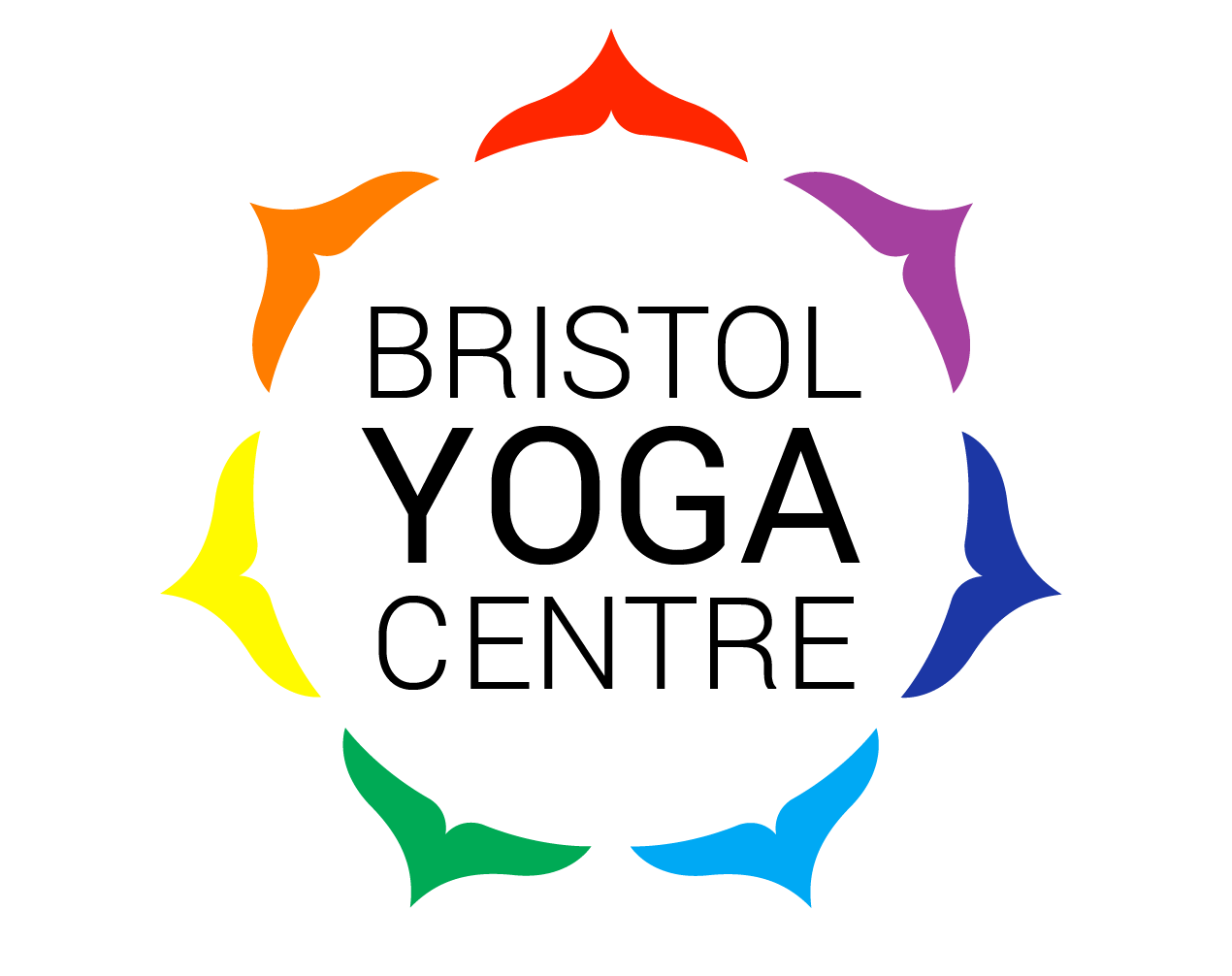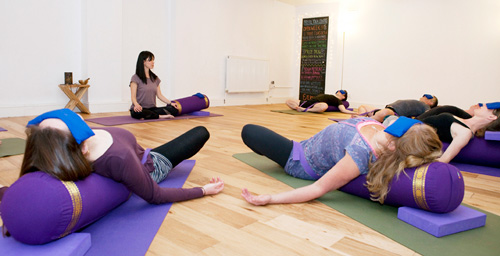A history of guru-sisya (guru-disciple) relations and analysis of their controversies in contemporary yoga
In this essay, I will explore guru-sisya relations by looking at the pre-modern definition of gurus and the history of their role in yoga. I will also discuss how recent controversies have highlighted examples of gurus abusing their position of power, and question whether the traditional guru-sisya relationship facilitates this abuse.
Yoga comes from an oral tradition in which teaching was transmitted directly from teacher to student[1]. Disciples had to take extensive training and receive special initiation under a qualified guru, before worthy devotees were taught the secret of yoga[2]. Prior to manuscripts being widely available, this was likely to be the only practical option available for learning yoga.
It’s difficult to pinpoint exactly when the guru-sisya relation was developed, but Georg Feuerstein estimates that it dates back to the early Vedic period (4500 – 2500 BCE)[3]. In the Advaya Taraka Upanishad (16) ‘guru’ is described as ‘a destroyer of darkness’, from the translation of the syllable ‘gu’ signifying darkness and ‘ru’ meaning destroyer of that darkness[4]. The Sanskrit word ‘sisya’ has double meaning of instruction and chastisement. It’s said to be an equivalent to the Hindi word ‘chela’ for student but can also mean servant[5].
Gurus are said to have obtained special powers and are often considered to be an embodiment of the Divine. Therefore, students are expected to serve and obey their teacher [6]. Through vigorous initiation and training, a spiritual link was said to be formed between them, with the aspirant receiving energy and mystical power from the guru. This special connection is referred to as lineage or ‘parampara’. Parampara is described as chain of empowerment that exceeds the world of space and time and this relationship is said to continue even after death[7].
The role of guru in in the pre-modern yoga period was indispensable and it was assumed that ‘yoga would simply not work without the grace of guru’ [8]. There are numerous historical yogic texts that illustrate the magnitude of guru. For example, in Shiva Samhita (3.14), it’s proclaimed that ‘Everything that is good for the self is obtained though the grace of guru, so that guru is to be served constantly, or else nothing good will happen’[9]. Similarly, Hatha Yoga Pradipika (4.9) states, ‘who truly knows the greatness of Raja Yoga? Knowledge, liberation, stability and success are obtained from the teachings of a guru’[10]. Lastly, in the Brahma-Vidya-Upanishad says that ‘The guru alone is Hari (Vishnu) incarnate’ (31).
These versus illustrate the importance of gurus but it doesn’t give a clear picture of their principal characteristics. In Advaya Taraka Upanishad, the qualities of a guru are described:
‘The teacher is he who knows the eternal wisdom, the Veda, who is devoted to the All-Pervader Vishnu, who knows not arrogance, who knows the method of yoga, ever stands upon yoga, and has become yoga itself; who is pure, who is devoted to his teachers, and who has witnessed the supreme person, Purusha’[11] (14-18).
Intriguingly, the Kula-Arnava-Tantra suggests that there are different aptitudes of gurus, verse 13.105 says that, ‘there are many gurus who are proficient in the Vedas and Shastras, but hard to find, O Devi, is the guru who has attained to the supreme truth’. This suggests that there were spectrum of gurus and superior ones were somewhat rare. Furthermore, the following text indicates that many gurus were unethical. ‘Many are the gurus who rob the disciple of his wealth, but rare is the guru who removes the afflictions of the disciple’ (13.108).
In the past, the teaching of Yoga was secretive and exclusive[12]. In contrast, yoga is now hugely popular and many people practice diverse forms and new styles of yoga. It’s currently estimated that there are 300 million yoga practitioners worldwide[13]. According to the Yoga Journal in 2016, the yoga market was worth $80bn (£74bn) globally[14].
In contemporary yoga, most students attend a regular group class with a yoga teacher instead of a guru. Most modern students don’t believe that their teacher has special spiritual powers or that they are an incarnation of God. Students are no longer tested or initiated and can even learn yoga from online classes or step-by-step books. It’s now common for people to emphasise the autonomy of their practice and opt to ‘listen to their inner teacher’[15]. Even if they don’t subscribe to this notion, pupils have the freedom to pick and mix what they want to learn. Furthermore, practitioners don’t necessary come to yoga for spiritual enlightenment; they want to learn yoga for variety of reasons from stress relief, increasing physical mobility to loosing weight.
Nevertheless, there are students who seek the traditional guru-sisya relationship because they believe it is a more authentic way to learn. For example, many Ashtanga Vinyasa Yoga students from around the world go and practice at the KPJAI (Krishna Pattabhi Jois Ashtanga Yoga Institute) in India to gain a genuine guru-sisya connection, or Parampara, which is said to be the hallmark of their yoga[16].
In the twentieth and twenty first century, there have been many renowned gurus and senior yoga teachers accused of physical, mental and sexual abuse and financial extortion. The appalling irony is that they obtain their status by claiming to be an example of superior ethical standards. One of these is Pattabhi Jois, a founder of Ashtanga Yoga and KPJAI, who is accused of sexual misconduct and sexual assault by nine women spanning from the 1970’s to 1990’s [17].
One of the victims, Karen Rain said, ‘I wanted to believe what some people claimed, and still do, that Pattabhi Jois was transferring a healing energy to me by touching me that way’. She practiced Ashtanga yoga for 11 yeas and spent 24 months in KPJAI before deciding to quit yoga altogether. Rain recounts, ‘Practicing Ashtanga yoga gave me a sense of purpose and meaning. I was part of an elite group of certified teachers and advanced practitioners…I had a sense of fulfillment, I had found where I belonged’ Rain goes on to explain why she left without accusing Jois: ‘I knew intuitively the community would dismiss any disclosure on my part and that I would encounter criticism, stigma, and disdain. Rather than speak up, I chose to disappear’ [18].
KPJAI and the Ashtanga community have either rejected the victim’s claims or remained largely silent over the accusations[19]. As demonstrated by Rain, there are complex reasons why people don’t speak up about abuse, but victims are unlikely to want to come forwards if time and again unethical gurus and teachers are not made accountable for their actions and continue as prominent figures within the yoga community.
Kausthub Desikachar, son of T.K.V. Desikachar and grandson of Sri T. Krishnamacharya, intimidated his female students into believing that they are unwell and then attempted to sexually assault them.[20] Even though this has come to light, Kausthub still operates as the current lineage holder of the classical Yoga tradition of T Krishnamacharya & TKV Desikachar. He is also the CEO of the Krishnamacharya Healing & Yoga Foundation[21]. Similarly, a senior Iyengar Yoga Teacher, Manouso Manos is currently being independently investigated for multiple allegations of sexual assault and yet he is still invited to renowned international yoga conference as if nothing has happened[22].
The yoga community has a responsibility to create a more transparent and safer environment for their students. There are many great yoga teachers that genuinely care for their student’s wellbeing, however until these issues are seriously addressed, their work will be undermined. It is important to investigate how these allegations have been dismissed and appalling actions disregarded for so long.
The teachers and students dismissing these claims have often invested a large amount of time, money and emotion in their guru and the organisation. They may have even built their careers and close relationships through being part of the community. It’s easy to see why they do not want to admit that they could have been wrong to venerate a guru, when they hear that they have been accused of misconduct. It’s vital that their followers cultivate enough courage and admit when they’ve been misled, rather than choose to protect the reputation of abusive ‘gurus’.
The unethical ‘gurus’ often use the mystical elements of yoga and its complicated multifaceted philosophies to facilitate their abusive behaviour to deceive many people. They may even believe that this is an acceptable way to treat students from their understanding of the historical guru-sisya relationship.
The traditional idea that ‘if there is no guru, there can be no enlightenment’[23] places the sisya in a position where they must submit to the will of the guru in order to achieve spiritual progress. This creates an extremely un-balanced power dynamic between the guru and the sisya. We can clearly see from the number of allegations made against gurus that there is a common abuse of this position. The full range of allegations made towards gurus is beyond the scope of this essay to fully address but I find it deeply disturbing and feel that it warrants much further attention.
I do take some optimism from the fact that more victims are prepared to come forwards and call out abuse especially since the #metoo movement. I hope that we can create a more open culture where trust in teachers and gurus can begin to be restored, but until there is public acceptance and reconciliation of these offences then I see little progress being made.




















